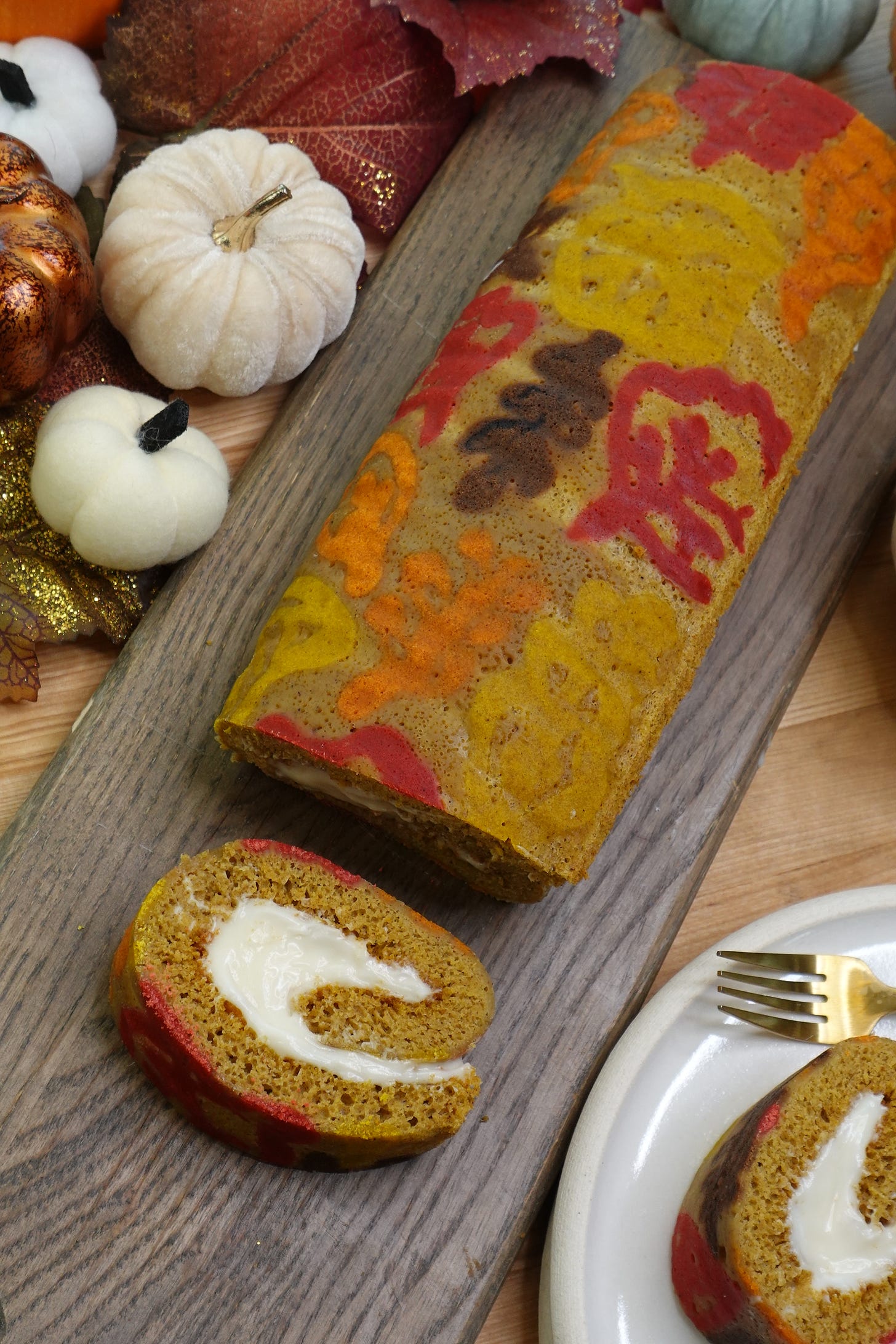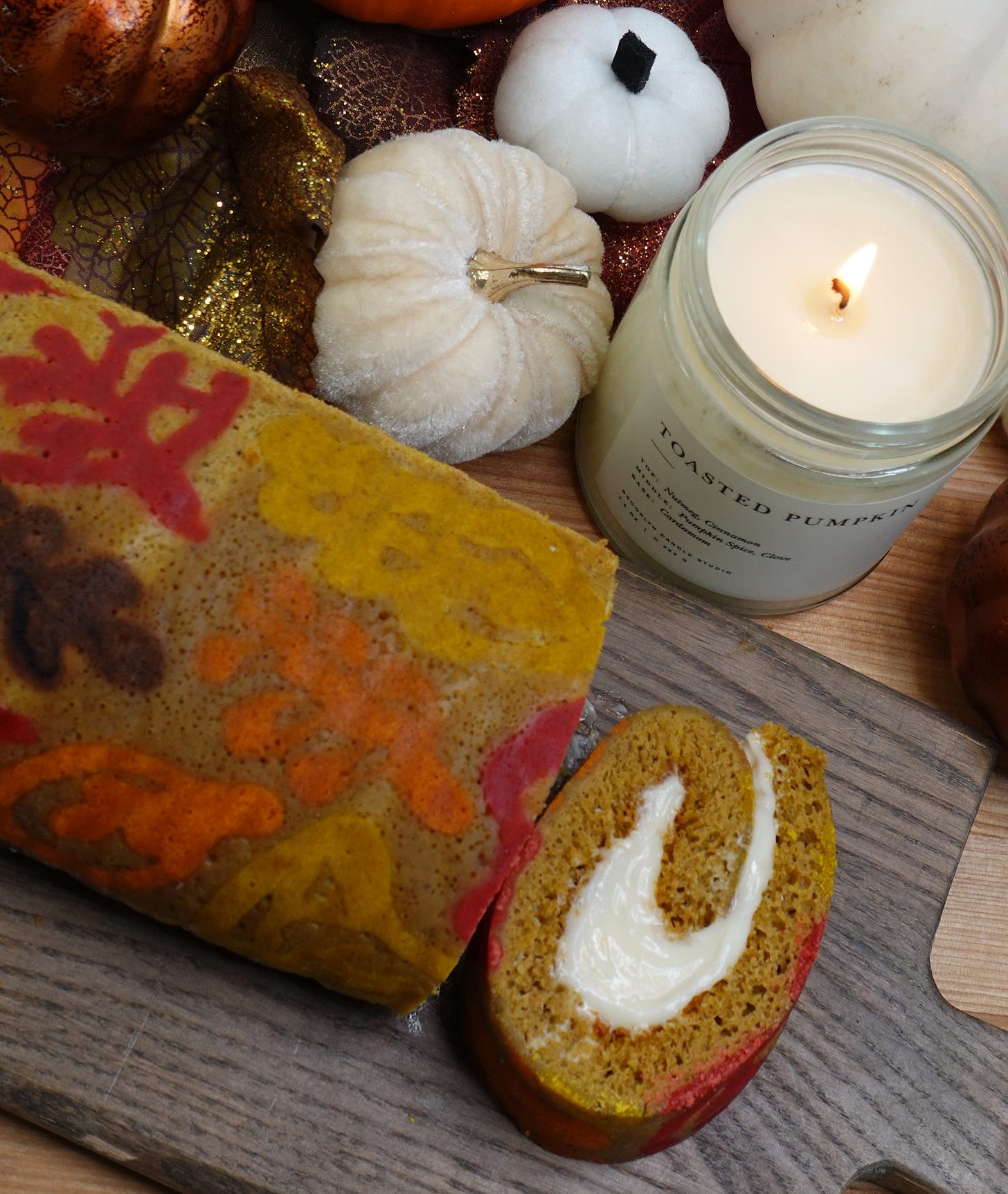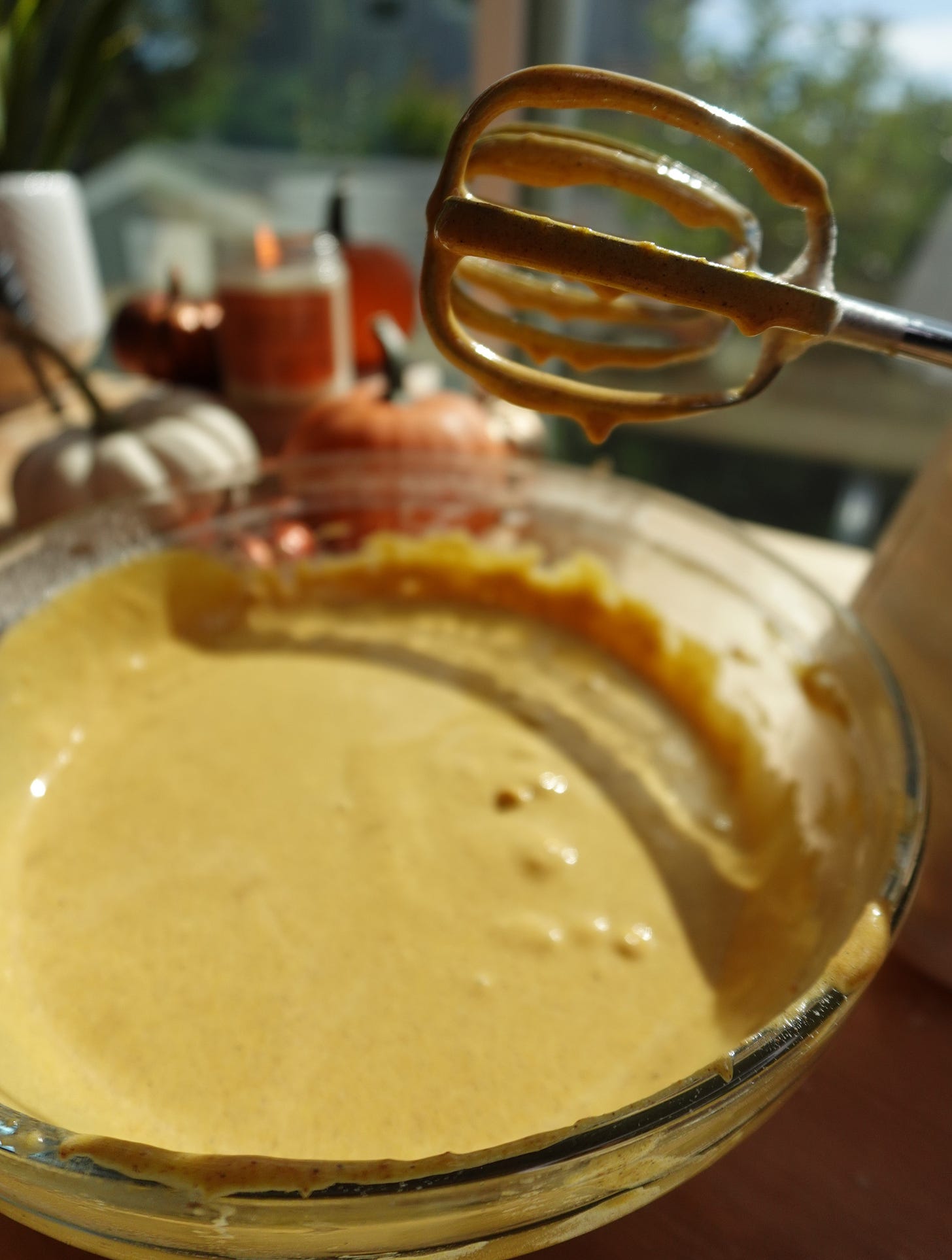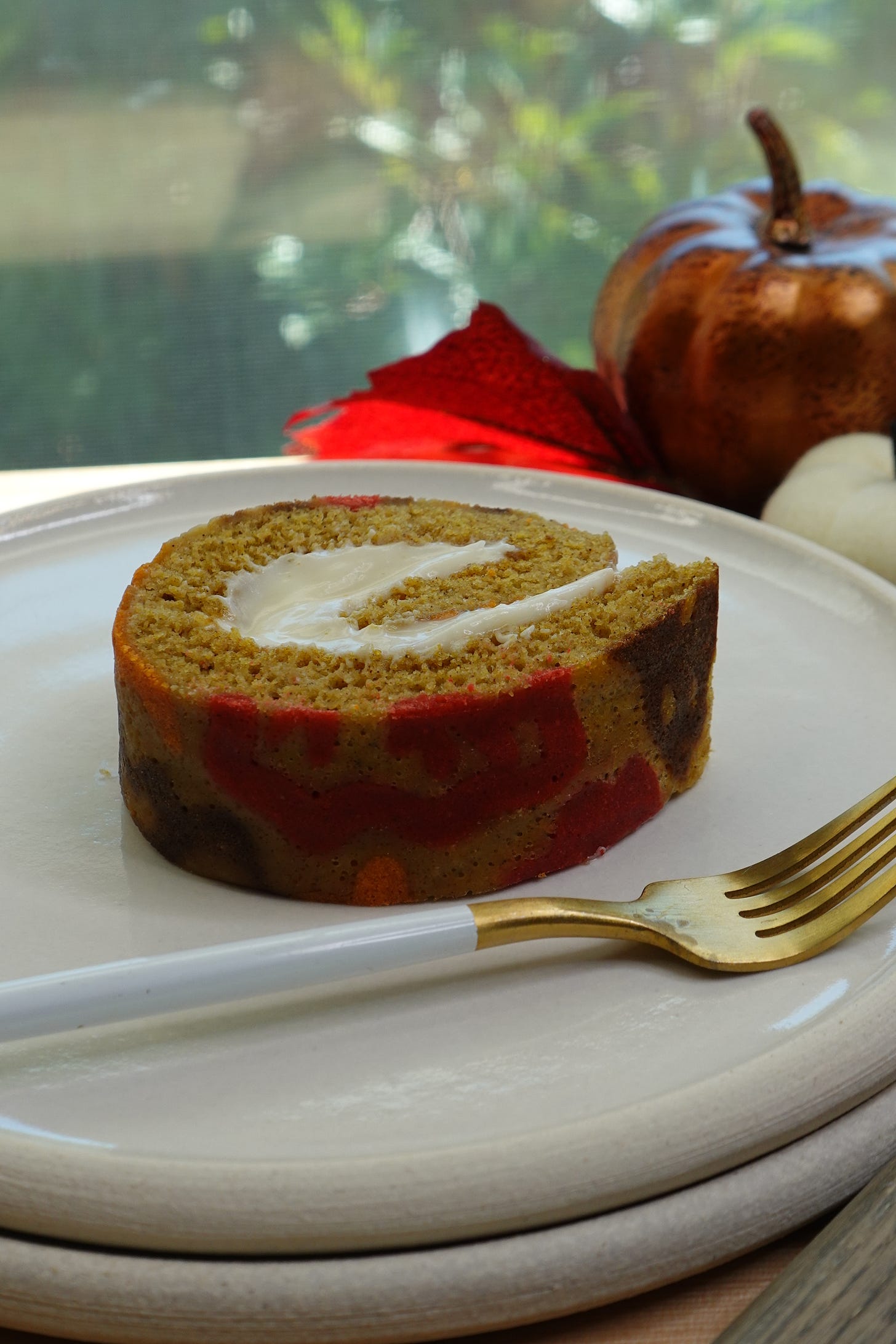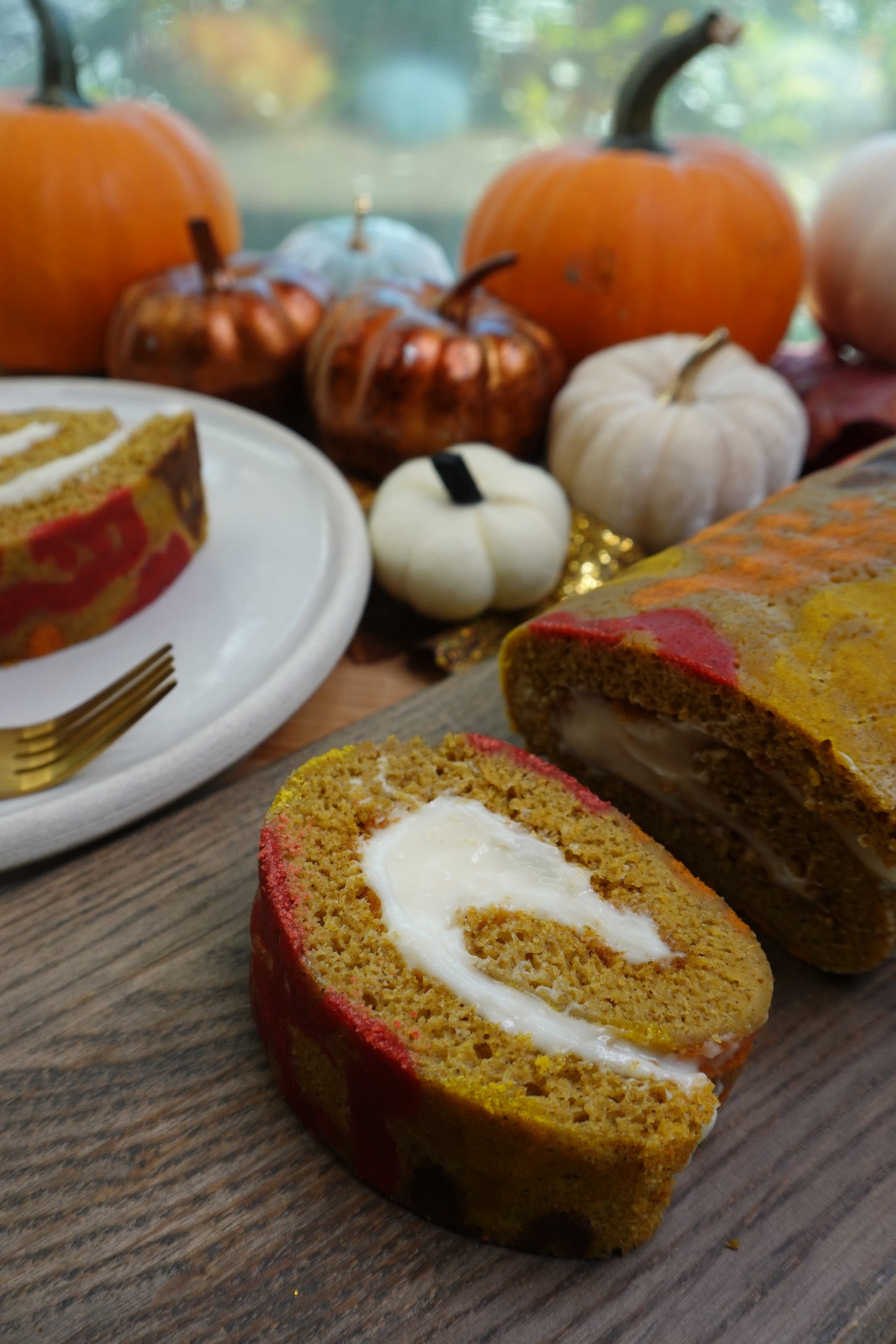Pumpkin Cream Cheese Roll Cake
People really don’t roll up cakes enough. I get it—there’s a certain level of intimidation, and I can’t say I blame you. But I so wish more people knew
how surprisingly simple they are, and when you do it right, they come out picture-perfect. I know what you’re thinking: “Sure, sure, easy for you to say.” Trust me, I’ve been through my fair share of cracked, split, and completely uncooperative roll cakes. They can break your heart. Full disclosure, the lovely one you see in this newsletter? It’s my second attempt. Why? I forgot to spray my parchment paper, and that first one ended in a delicious mess. But this is exactly why I’m confident I can help you avoid the common pitfalls—because I’ve made them all myself.
So let’s talk about the cake. Then we can get into why it causes trouble and why, despite everything, it’s also the most feather-light, dreamy cake you’ll ever make.
A roll cake is basically a sponge cake, which gets its name from its wonderfully airy, spongy texture. Sponge cakes don’t rely on any baking powder or soda; they’re leavened solely by the air whipped into the egg whites. Egg yolks are the only fat in the batter, which means the cake ends up being light and delicate, almost fragile. And that’s where the cracks and crumbles like to sneak in.
The very thing that makes a sponge cake so delightful—the delicate, tender crumb—is also what makes it so maddening. It’s essential to roll the cake while it’s still warm, right out of the oven, before it has a chance to firm up and start making its own decisions about where to crack. If you move fast, it’ll roll up obediently, letting you work your magic without any crumbling drama.
Now, let me save you from a major headache: you must spray your parchment paper (and your pan) with non-stick spray. Parchment paper, despite its good reputation, isn’t as non-stick as we’d all like to believe. Especially with sponge cakes, which don’t have enough fat in them to prevent sticking. Eggs have a habit of clinging to surfaces, and skipping this step will leave you with a cake that’s stubbornly stuck to the paper. Don’t ask how I know.
“But this sounds fussy,” you say. “This doesn’t seem easy at all!” I promise, it’s not as complicated as it sounds. Like anything else in the kitchen, following a few simple rules makes all the difference.
So, is it worth it? Absolutely, yes.
A rolled cake is a true showstopper. There’s something so festive about seeing one on a platter, and it always gets those delighted gasps you’re secretly hoping for. Roll cakes are a bit rare these days, often saved for Yule logs at Christmas, but that’s exactly why they make such an impression.
This Pumpkin Roll Cake is the perfect choice when you want something special, festive, and a little different from the usual pumpkin pie. Don’t be intimidated by the fancy leaf designs on mine either —they’re purely optional. Honestly, my favorite way to serve this cake is simply dusted with powdered sugar, maybe with a few colorful fall leaves from the backyard tucked around it. Simple, elegant, and nothing could be prettier. So, let’s get rockin’ and rollin’ this season, shall we?
Keep reading with a 7-day free trial
Subscribe to Chef Veronica Eicken to keep reading this post and get 7 days of free access to the full post archives.





